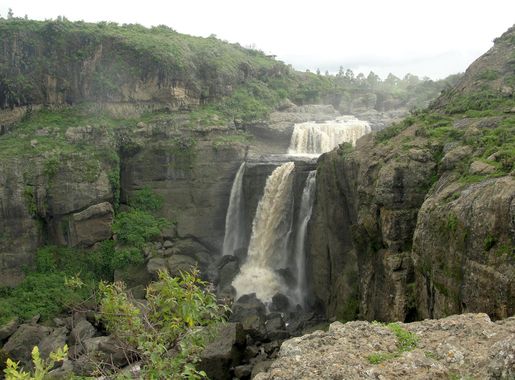
Debre Libanos Monastery: Sanctuary in the Ethiopian Highlands
Explore the Debre Libanos Monastery: A 13th-century Ethiopian landmark blending rich history, spiritual depth, and stunning natural beauty in the Ethiopian Highlands.
Nestled in the Ethiopian Highlands, the Debre Libanos Monastery is an awe-inspiring site that offers a glimpse into the country's rich history and spirituality. Founded in the 13th century by Saint Tekle Haymanot, this monastery stands as a testament to Ethiopia's enduring faith and cultural heritage. It is located about 100 kilometers north of Addis Ababa, making it an ideal day trip from the capital. The monastery complex includes several impressive structures, most notably the main church which features stunning stained glass windows and intricate murals. Visitors are also drawn to the cave where Saint Tekle Haymanot is said to have meditated for 29 years. This sacred site offers a serene environment for contemplation and reflection. In addition to its religious significance, Debre Libanos Monastery boasts breathtaking natural beauty. The surrounding cliffs and valleys provide spectacular views and opportunities for hiking. Wildlife enthusiasts may also spot Gelada baboons and various bird species native to the region. Whether you are a history buff, a spiritual seeker, or a nature lover, Debre Libanos Monastery promises a memorable and enriching experience.
Local tips in Debre Libanos Monastery
- Dress respectfully, covering shoulders and knees, as it is a religious site.
- Hire a local guide to learn about the monastery's history and significance.
- Bring binoculars for bird watching and spotting wildlife in the surrounding area.
- Visit early in the morning to avoid crowds and enjoy the serene atmosphere.
- Carry some cash as there are no ATMs nearby and you may want to donate to the monastery or purchase local handicrafts.
Debre Libanos Monastery: Sanctuary in the Ethiopian Highlands
Nestled in the Ethiopian Highlands, the Debre Libanos Monastery is an awe-inspiring site that offers a glimpse into the country's rich history and spirituality. Founded in the 13th century by Saint Tekle Haymanot, this monastery stands as a testament to Ethiopia's enduring faith and cultural heritage. It is located about 100 kilometers north of Addis Ababa, making it an ideal day trip from the capital. The monastery complex includes several impressive structures, most notably the main church which features stunning stained glass windows and intricate murals. Visitors are also drawn to the cave where Saint Tekle Haymanot is said to have meditated for 29 years. This sacred site offers a serene environment for contemplation and reflection. In addition to its religious significance, Debre Libanos Monastery boasts breathtaking natural beauty. The surrounding cliffs and valleys provide spectacular views and opportunities for hiking. Wildlife enthusiasts may also spot Gelada baboons and various bird species native to the region. Whether you are a history buff, a spiritual seeker, or a nature lover, Debre Libanos Monastery promises a memorable and enriching experience.
When is the best time to go to Debre Libanos Monastery?
Iconic landmarks you can’t miss
Simien Mountains National Park
Discover the stunning landscapes and unique wildlife of Simien Mountains National Park, a must-visit destination for nature lovers and adventure seekers in Ethiopia.
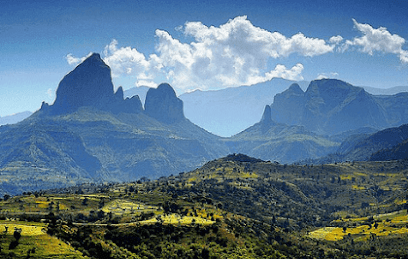
Debre Libanos
Experience the serene beauty and rich history of Debre Libanos Monastery, a spiritual haven in the heart of Ethiopia's stunning landscape.
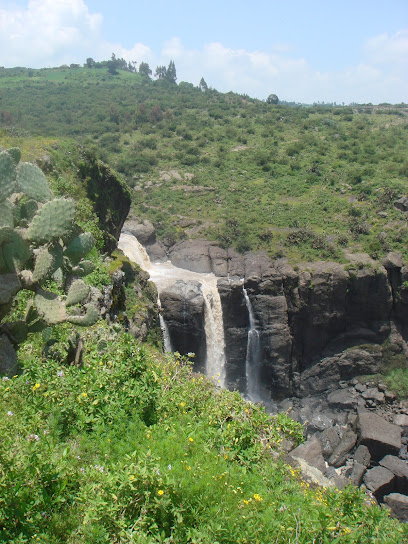
Rock-Hewn Churches, Lalibela
Explore the Rock-Hewn Churches of Lalibela, a UNESCO World Heritage site showcasing Ethiopia's rich spiritual and architectural heritage.
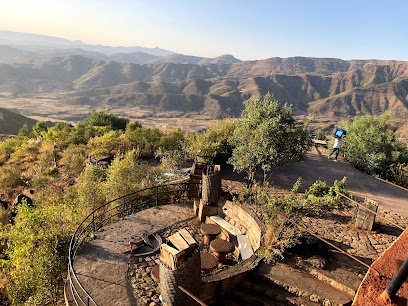
Portuguese Bridge
Explore the Portuguese Bridge, a historic landmark near Debre Libanos Monastery, combining stunning architecture and a rich cultural experience in Ethiopia.
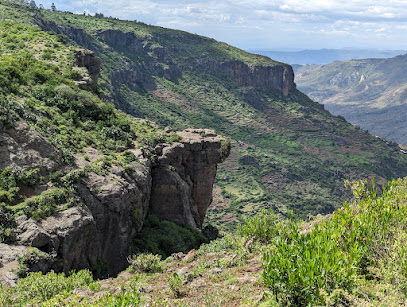
የፖርቹጋል ድልድይ
Explore the Historical Landmark in Abaro, a captivating destination rich in Ethiopian culture and history, set against stunning natural scenery.
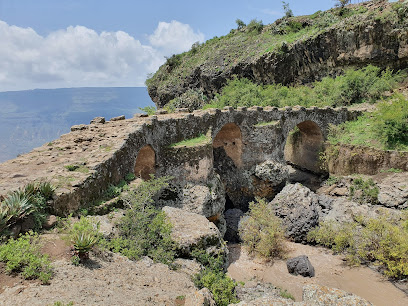
Washa Mikael Rock Hewn Church
Discover the breathtaking Washa Mikael Rock Hewn Church in Addis Ababa, a stunning testament to Ethiopia's rich cultural and religious heritage.
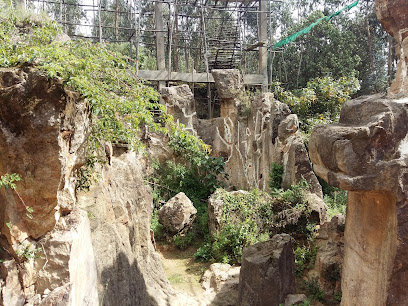
Debre Damo
Discover the stunning heights of Debre Damo, an ancient monastery offering breathtaking views and a deep dive into Ethiopia's rich religious heritage.
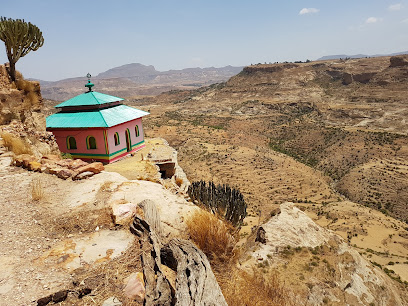
Bete Abba Libanos
Experience the sacred beauty and architectural brilliance of Bete Abba Libanos, a UNESCO World Heritage site in Lalibela, Ethiopia.
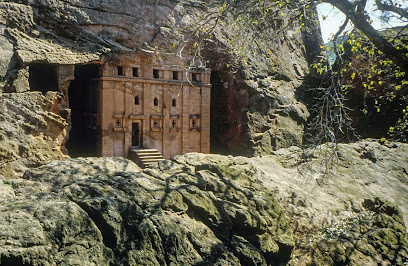
Tiya World Heritage Site
Unravel the mysteries of Ethiopia's ancient past at Tiya World Heritage Site, home to magnificent stelae and rich archaeological heritage.

Adadi Maryam (Rock-Hewn)
Discover the architectural marvel of Adadi Maryam, a rock-hewn church in Ethiopia, steeped in history and spiritual reverence.
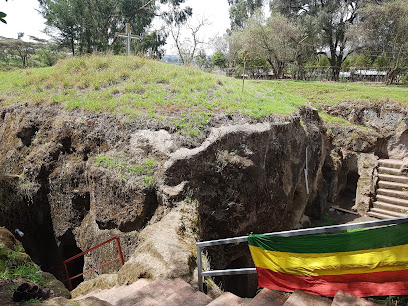
Debre Libanos Monastery Museum
Explore the rich spiritual heritage and breathtaking views at Debre Libanos Monastery Museum, a must-visit destination in Ethiopia.

Debrelibanos Monastry and Church
Discover the enchanting Debrelibanos Monastery and Church, a serene retreat showcasing Ethiopia's rich history and stunning architectural beauty amidst breathtaking landscapes.
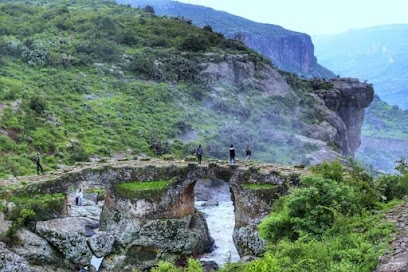
Monastère Saint-Étienne de Hayq
Experience the spiritual serenity and cultural richness of Ethiopia at Monastère Saint-Étienne de Hayq, nestled by the stunning Hayk Lake.
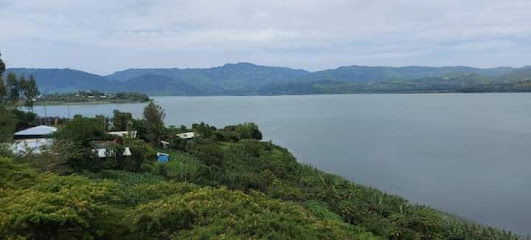
Debre libanos
Discover the spiritual serenity and breathtaking views of Debre Libanos, a historic Ethiopian Orthodox monastery nestled in the stunning highlands.
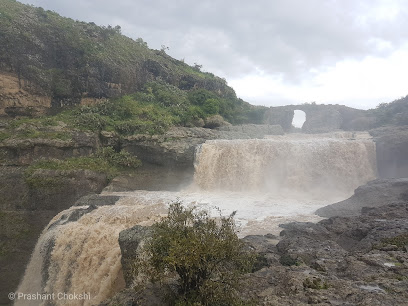
Unmissable attractions to see
Unity Park
Explore the vibrant Unity Park in Addis Ababa, a cultural hub filled with art, history, and beautiful gardens perfect for family outings and leisurely strolls.
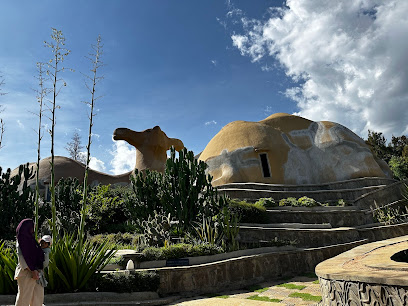
Friendship Park
Experience the lush greenery and cultural richness of Friendship Park, a serene haven in the bustling heart of Addis Ababa, Ethiopia.
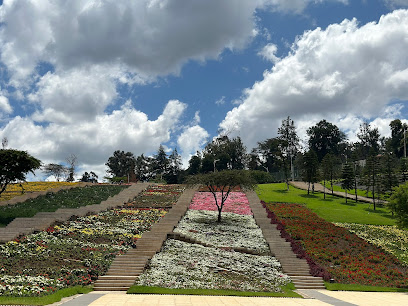
Holy Trinity Cathedral
Explore the Holy Trinity Cathedral in Addis Ababa, a stunning Orthodox church rich in history and architectural beauty, reflecting Ethiopia's vibrant culture.
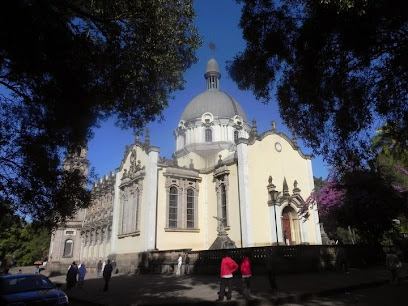
Bora Amusement Park | Bole
Experience the excitement of Bora Amusement Park in Bole, Addis Ababa - a thrilling destination for family fun and adventure in Ethiopia.
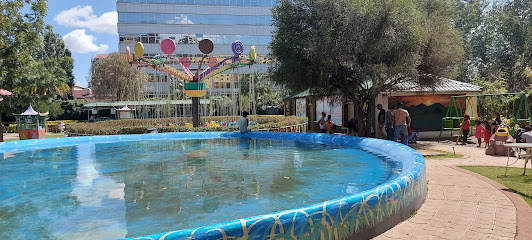
Gulele Botanical Garden
Explore Gulele Botanical Garden, a tranquil oasis in Addis Ababa featuring diverse flora and breathtaking landscapes perfect for relaxation and discovery.

Emperor Tewodros II Square
Discover Emperor Tewodros II Square in Addis Ababa, a historical landmark that captures the essence of Ethiopia's rich cultural heritage and vibrant urban life.
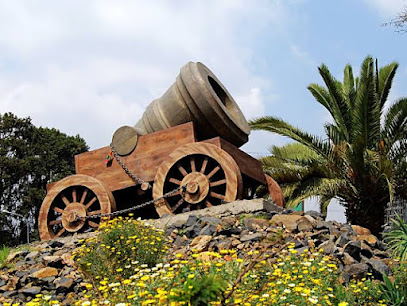
Addis Ababa Museum | Meskel Square | አዲስ አበባ ሙዚየም | መስቀል አደባባይ
Immerse yourself in Ethiopia's vibrant culture and history at the Addis Ababa Museum, a must-visit for every traveler.
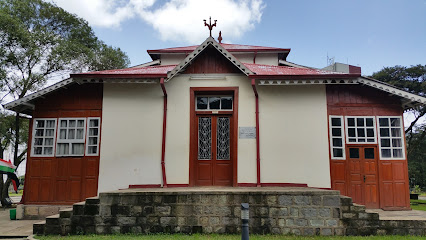
Lion Park
Explore the enchanting Lion Park in Addis Ababa, where Ethiopia's wildlife comes to life amid serene natural beauty.
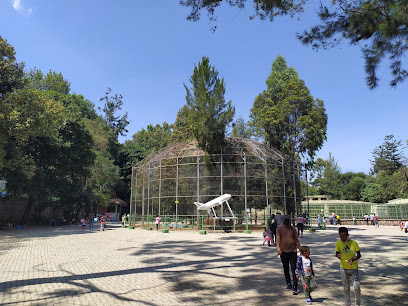
Lion of Judah Statue
Discover the Lion of Judah Statue in Addis Ababa, a magnificent symbol of Ethiopian heritage and a must-see tourist attraction.
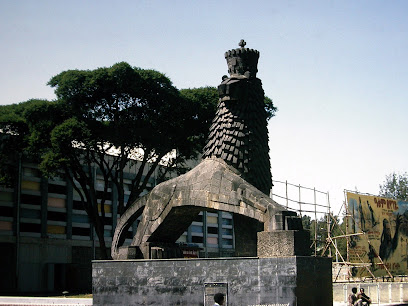
Washa Mikael Rock Hewn Church
Explore the stunning Washa Mikael Rock Hewn Church, a historical gem in Ethiopia showcasing exquisite rock-carved architecture and rich Orthodox traditions.
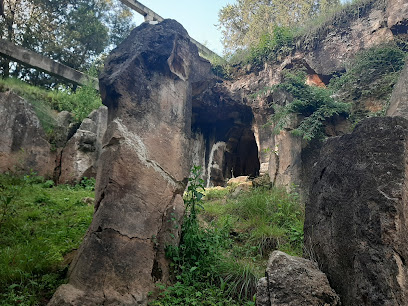
The Zoological Natural History Museum
Uncover Ethiopia's rich biodiversity at The Zoological Natural History Museum, where fascinating natural history and conservation stories come to life.

Science Museum Meeting Hall ሳይንስ ሙዝየም መሰብሳቢያ አዳራሽ
Explore the Science Museum Meeting Hall in Addis Ababa – a hub of innovation, education, and interactive exhibits for all ages.
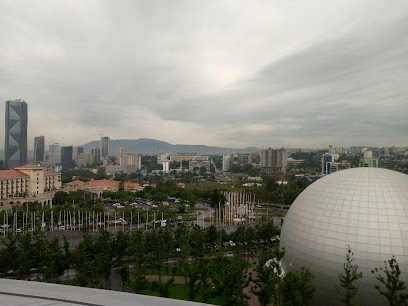
Debre Libanos Monastery Museum
Explore the Debre Libanos Monastery Museum, a cultural jewel in Ethiopia, showcasing rich history and breathtaking landscapes.
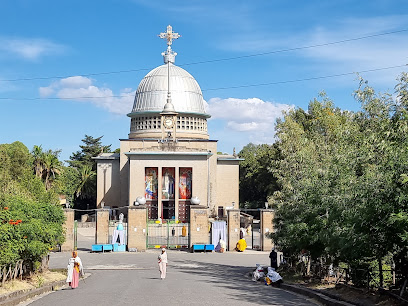
የደመራ ቦታ
Experience breathtaking views and rich cultural history at Entoto Mountain, a serene escape just outside Addis Ababa.
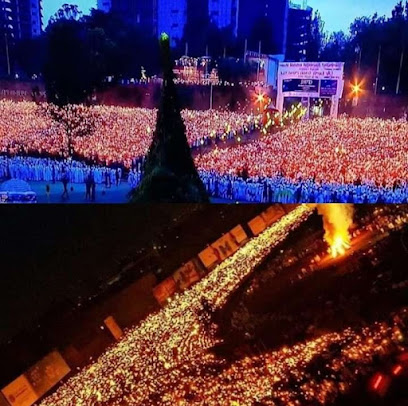
Miyazya 27 Victory Statue
Discover the Miyazya 27 Victory Statue, a powerful symbol of Ethiopia's history and resilience in the heart of Addis Ababa.

Essential places to dine
Yod Abyssinia Traditional Restaurant
Discover authentic Ethiopian flavors at Yod Abyssinia Traditional Restaurant in Addis Ababa – where every meal tells a story.
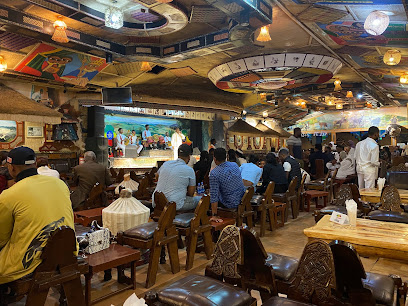
Kategna Restaurant
Savor the essence of Ethiopia at Kategna Restaurant – where tradition meets taste in every dish.
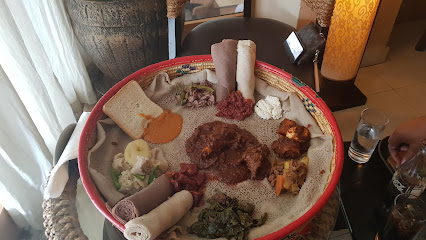
2000 Habesha cultural restaurant | Bole Atlas | 2000 ሀበሻ የባህል ሬስቶራንት | ቦሌ አትላስ
Savor the authentic taste of Ethiopia at 2000 Habesha Cultural Restaurant in Addis Ababa - A true cultural dining experience.
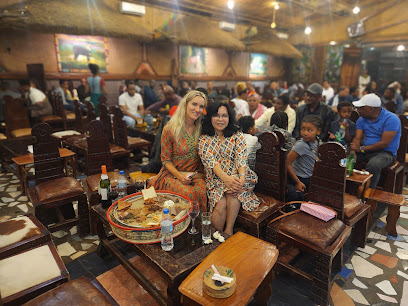
Dashen Traditional Restaurant
Discover the heart of Ethiopia through its flavors at Dashen Traditional Restaurant – where tradition meets taste in Addis Ababa.
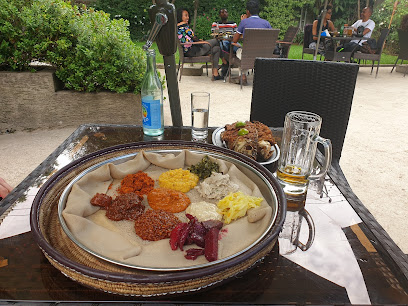
Allebnany Restaurant
Discover the essence of Lebanese cuisine at Allebnany Restaurant in Addis Ababa's lively Bole district.
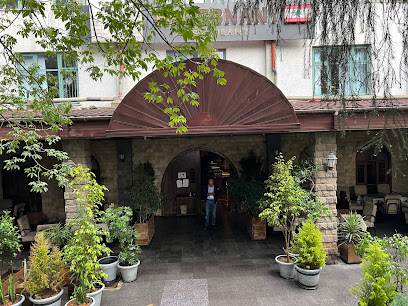
Totot Traditional food Hall | Gerji | ቶቶት | ገርጂ
Experience authentic Ethiopian flavors at Totot Traditional Food Hall in Addis Ababa's Bole district—a culinary journey steeped in tradition.
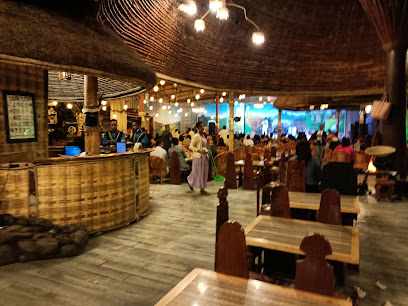
Belvedere Restaurant
Experience the best of Italian cuisine in Addis Ababa at Belvedere Restaurant – where authentic flavors meet warm hospitality.
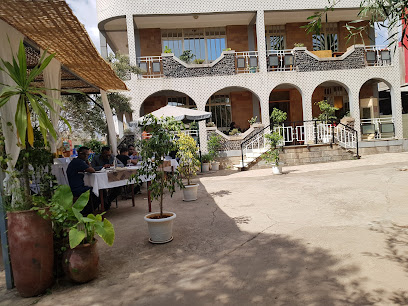
Ben Abeba
Experience authentic Ethiopian cuisine at Ben Abeba in Lalibela—where stunning views meet exceptional flavors.
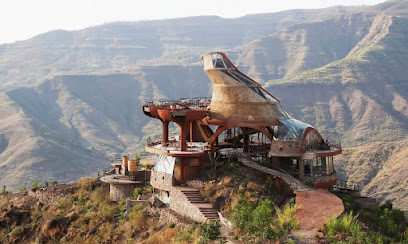
Sangam Restaurant
Experience the vibrant flavors of India at Sangam Restaurant in Addis Ababa – where every dish tells a story.
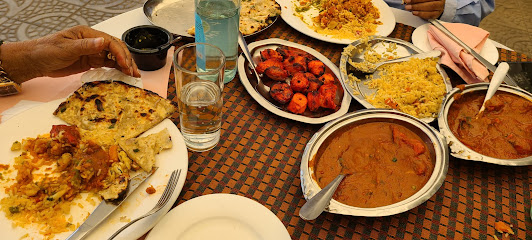
La Mandoline French Restaurant
Savor authentic French cuisine at La Mandoline in Addis Ababa - where every dish tells a story.
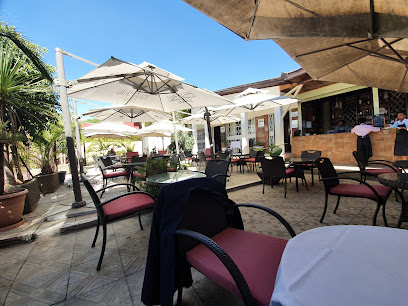
Hibir Ethiopia Cultural Restaurant | Bole | ህብር ኢትዮጲያ ባህላዊ ሬስቶራንት | ቦሌ
Discover authentic Ethiopian flavors and vibrant cultural experiences at Hibir Ethiopia Cultural Restaurant in Bole, Addis Ababa.
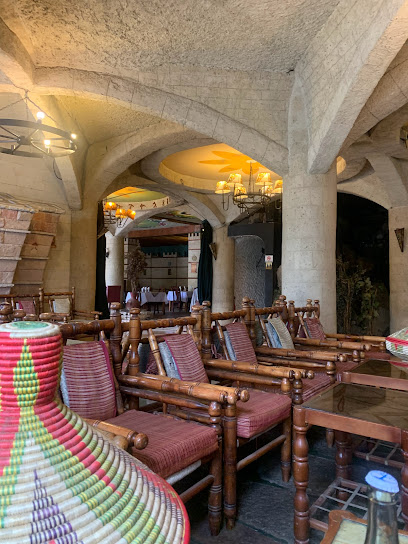
Sakura Japanese Restaurant | Bole Rwanda | ሳኩራ የጃፓን ሬስቶራንት | ቦሌ ሩዋንዳ
Experience authentic Japanese cuisine at Sakura Restaurant in Bole, where tradition meets contemporary flair in every dish.
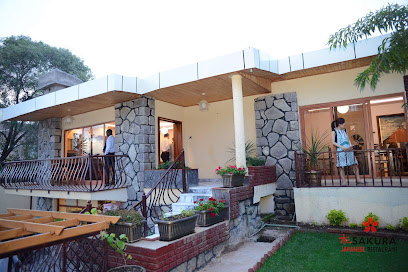
Dok Restaurant Top View
Discover authentic Italian flavors at Dok Restaurant in Addis Ababa, where exquisite cuisine meets stunning views for an unforgettable dining experience.
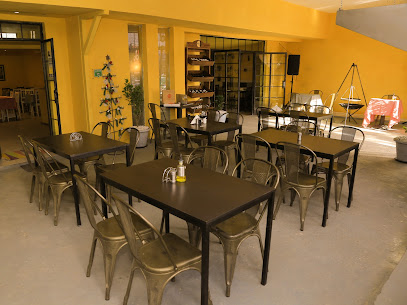
Castelli's Restaurant | piasa | ካስትል ሬስቶራንት | ፒያሳ
Experience the best of Ethiopian and Italian cuisine at Castelli's Restaurant in Addis Ababa - a culinary gem offering unique flavors.
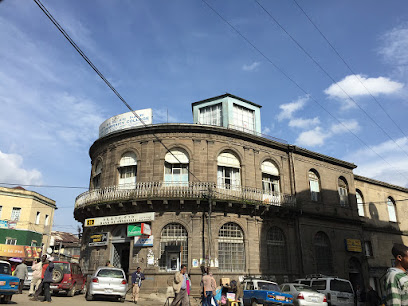
Mama's Kitchen | Bole Medhanialm | ማማስ ኪችን | ቦሌ መድሐኒአለም
Discover the essence of Ethiopian cuisine at Mama's Kitchen in Bole Medhanialm, where every dish tells a story of tradition and flavor.
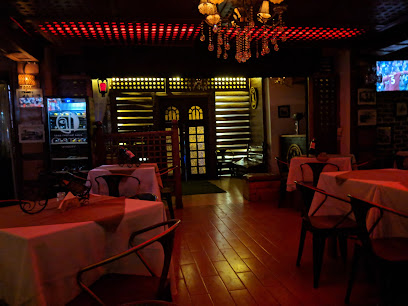
Markets, malls and hidden boutiques
Debre Libanos
Discover the mystical beauty and historical richness of Debre Libanos, Ethiopia's iconic monastery set against stunning natural landscapes.
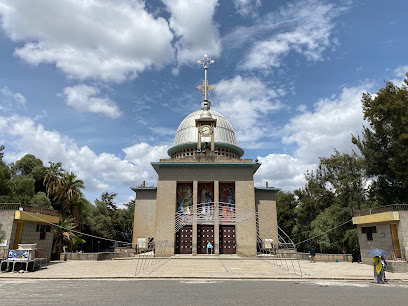
Salem's Ethiopia
Explore the vibrant artistry of Ethiopia at Salem's Ethiopia, where handcrafted treasures await in the heart of Addis Ababa.
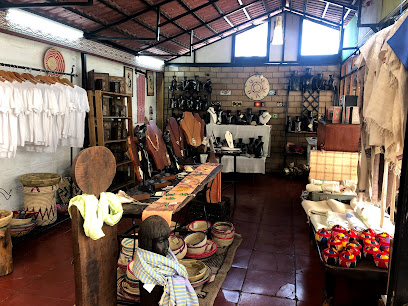
Sabahar
Explore Sabahar in Addis Ababa for authentic Ethiopian textiles and fashion accessories that reflect the vibrant culture and rich heritage of Ethiopia.
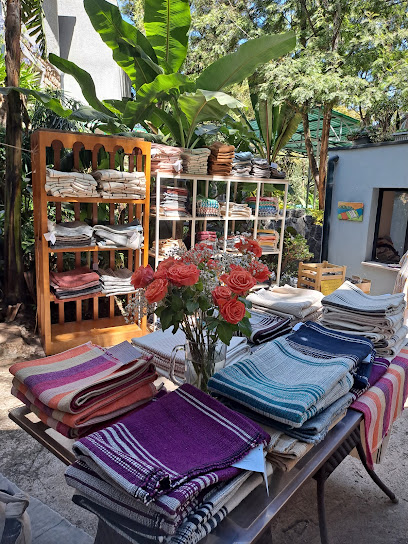
Addis Ababa Duty Free shop
Explore the Addis Ababa Duty Free Shop for an exceptional shopping experience with tax-free luxury goods and unique Ethiopian gifts.
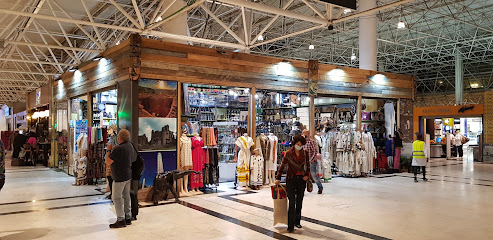
Dengez Gifts
Explore the beauty of Ethiopian craftsmanship at Dengez Gifts, your go-to destination for exquisite dried flowers and heartfelt gifts in Addis Ababa.
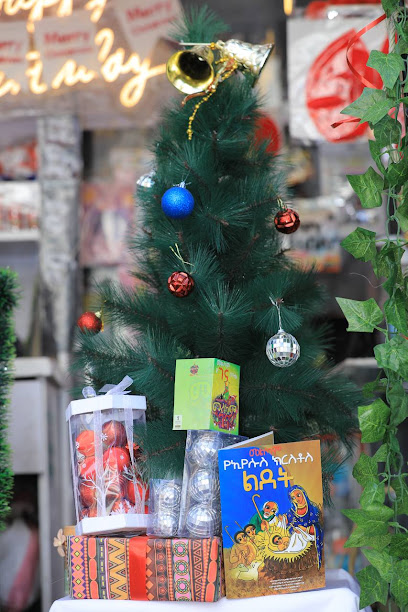
Debre Libanos Monastery Museum
Explore the rich heritage and spiritual serenity of Debre Libanos Monastery Museum, a must-visit destination in the Ethiopian highlands.
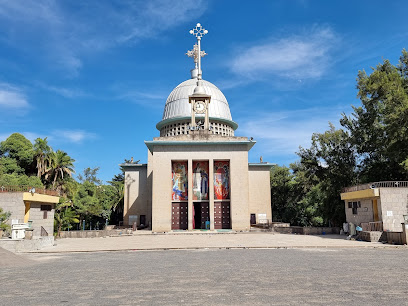
Nayo Gift and Decoration Shop
Explore Nayo Gift and Decoration Shop in Addis Ababa for unique Ethiopian souvenirs and handmade gifts that embody the local culture.
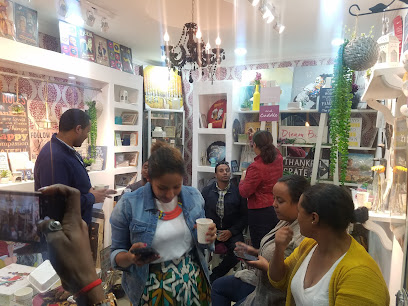
Tibeb Leather Works | Sarbet
Explore the finest handcrafted leather goods at Tibeb Leather Works, a unique blend of shopping and cultural experience in Addis Ababa.
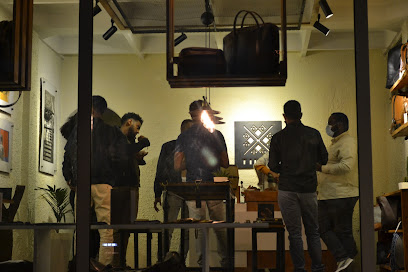
All In One Souvenir & Gift Shop
Explore All In One Souvenir & Gift Shop in Addis Ababa for unique local crafts and memorable souvenirs that celebrate Ethiopian culture.
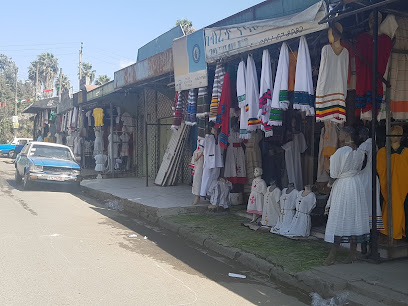
Maki Gifts
Discover authentic Ethiopian gifts at Maki Gifts, where unique craftsmanship meets cultural heritage in the heart of Addis Ababa.
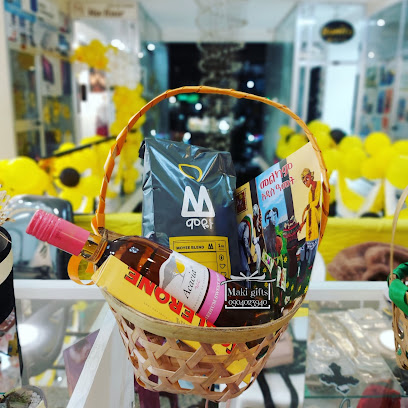
Abdi Negash Antique Store
Explore unique antiques and art at Abdi Negash Antique Store in Addis Ababa, a must-visit for culture enthusiasts and collectors alike.
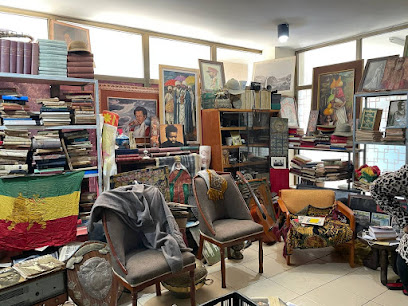
BeteSeb Gifts Delivery
Explore unique Ethiopian gifts at BeteSeb Gifts Delivery in Addis Ababa, where craftsmanship meets culture in every exquisite piece.

Lelina Gift Shop
Explore the vibrant culture of Ethiopia at Lelina Gift Shop, where unique souvenirs and handcrafted treasures await every traveler.

Truly Unique Shop
Explore the Truly Unique Shop in Addis Ababa for a diverse selection of stylish footwear, blending quality with local culture in a vibrant shopping atmosphere.

Ethio Gift
Explore Ethio Gift in Addis Ababa for authentic Ethiopian souvenirs and handcrafted treasures that celebrate the rich cultural heritage of Ethiopia.
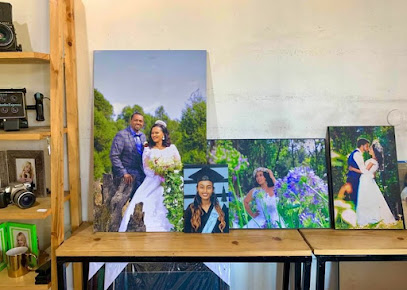
Essential bars & hidden hideouts
Black Rose Lounge
Discover the vibrant nightlife and rich culture at Black Rose Lounge, the ultimate spot for relaxation and entertainment in Addis Ababa.
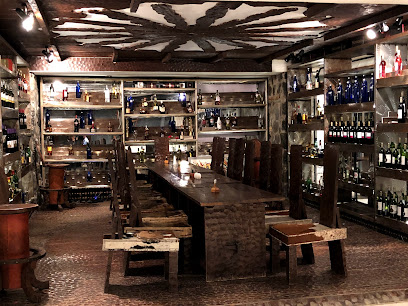
Top Bar | Kebena | ቶፕ ባር | ቀበና
Discover the vibrant nightlife of Addis Ababa at Top Bar, Kebena - where local flavors and a friendly atmosphere await.
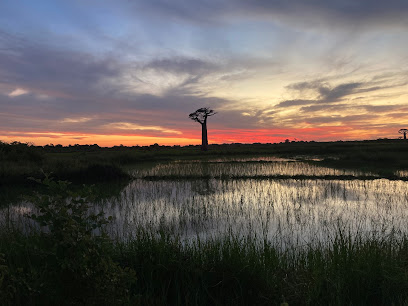
HENOK OBAMA JAMBO HAUSE
Discover the vibrant atmosphere and friendly service at Henok Obama Jambo House, where local culture meets a lively bar experience.
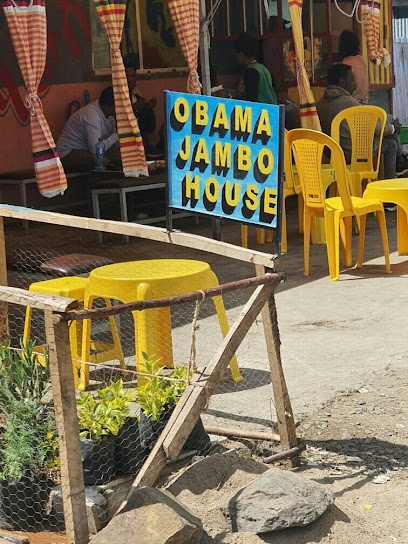
Bultum Hill Side Coffee House
Discover the serene ambiance and exquisite Ethiopian coffee at Bultum Hill Side Coffee House, a perfect retreat in the hills of Selale.
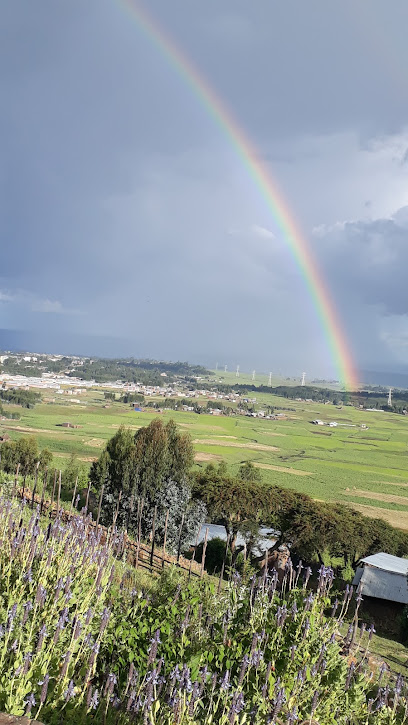
Cool Bar and Restaurant
Discover the vibrant flavors of Ethiopia at Cool Bar and Restaurant, where traditional cuisine meets a welcoming atmosphere.
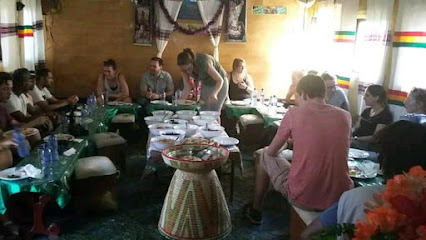
Feye kosshita
Explore the charming Feye Kosshita bar in Ali Doro, where local culture meets relaxation in a cozy setting.

Ab Hotel አብ ሆቴል፥ ባር እና ሥጋ ቤት
Experience the warmth of Ethiopian hospitality at Ab Hotel, a cozy bar in Fiche perfect for unwinding and connecting with locals.
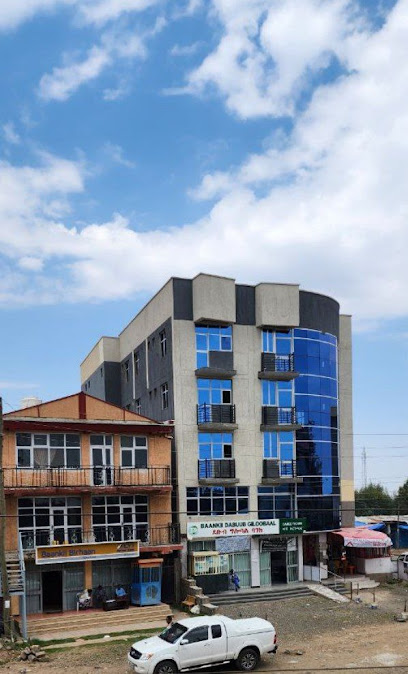
Adanech Dadi/Local Drink
Experience the vibrant culture and local drinks at Adanech Dadi, a must-visit bar in Degem Hambiso, Ethiopia.

Addis Hotel
Experience the vibrant atmosphere and authentic Ethiopian hospitality at Addis Hotel, a must-visit bar in Fiche.

Seyoum Bar & Restorunt
Discover the heart of Ethiopian culture at Seyoum Bar & Restaurant, a vibrant venue for food, drinks, and unforgettable experiences in Fiche.

Soliana Bar
Discover the vibrant atmosphere of Soliana Bar in Fiche, Ethiopia, offering local drinks and a cozy ambiance perfect for relaxation.

Dera Areke Bet
Dera Areke Bet - Discover Fiche's vibrant bar scene with traditional drinks and authentic Ethiopian hospitality.

bar &gril
Discover Deneba's lively Bar & Grill, where local flavors meet vibrant nightlife for an unforgettable dining experience.

Zembab Bar
Experience the vibrant atmosphere and local flavors at Zembab Bar in Degem Hambiso, a true cultural hotspot for tourists.

Fikir Bar and Restaurant
Discover authentic Ethiopian cuisine at Fikir Bar and Restaurant in Debre Tsige, where vibrant atmosphere meets traditional hospitality.

Local Phrases about Debre Libanos Monastery
-
- Helloሰላም
[sälam] - Goodbyeደህና ሁሉን
[dähna hulun] - Yesአዎ
[awo] - Noአይ
[ay] - Please/You're welcomeእባክህ/አዎን
[ebakih/awon] - Thank youአመሰግናለሁ
[amäsägänalhu] - Excuse me/Sorryስለዚህ ተልከህ/ወይ
[säläziha täläkähu/way] - How are you?እንዴት ነህ?
[ändet nah?] - Fine. And you?በጣም ነኝ. እንዴት ነህ?
[bätam nän. ändet nah?] - Do you speak English?እንዴት እናሳመድ ይችላሉ?
[ändet anäsamäd yichalalhu?] - I don't understandአማርኛ አልተማመሰርም
[amharic altemamäsärem]
- Helloሰላም
-
- I'd like to see the menu, pleaseምንም ምንም ምዝገብ እባክህ
[minim minim mizgeb ebakih] - I don't eat meatአልተመናሽ አምጣገና
[altemänash amtagna] - Cheers!ጠላማው!
[tälamaw] - I would like to pay, pleaseእባክህ የገበያ አድራሻ ሊያብር እንደሚፈልገው
[ebakih yägäbeya adäraşa liyabir endämidifällegew]
- I'd like to see the menu, pleaseምንም ምንም ምዝገብ እባክህ
-
- Help!እያ!
[eya] - Go away!ወደን!
[wädän] - Call the Police!ፖሊስን አደርኩ!
[polisän adärku] - Call a doctor!ዶክተር አደርኩ!
[doktor adärku] - I'm lostትክክለኛ ነኝ
[tikkilänga naw] - I'm illትክክለኛ ነኝ
[tikkilänga naw]
- Help!እያ!
-
- I'd like to buy...እባክህ ... ገዝና እንዴት?
[ebakih ... gazna ändet?] - I'm just lookingከመይ ተንኮል ነኝ
[kämäyi tenkoll näg] - How much is it?ቅጠል እንዴት ነው?
[kätäl ändet naw?] - That's too expensiveትክክለኛ ነው
[tikkilänga naw] - Can you lower the price?የገበያውን መንገድ አያይዞም?
[yägäbeyawin mänägäd ayayizom?]
- I'd like to buy...እባክህ ... ገዝና እንዴት?
-
- What time is it?ሰዓት እንዴት ነው?
[sä'at ändet naw?] - It's one o'clockአንድ ሰዓት ነው
[and sä'at naw] - Half past (10)አምስት በዋም አስታወቀ
[ämsit bäwam astawakä] - Morningጥዋት
[tawat] - Afternoonከሰዓት
[käs'at] - Eveningማታ
[mata] - Yesterdayትናንክ
[tänank] - Todayዛሬ
[zarä] - Tomorrowነገ
[nägä] - 1አንድ
[and] - 2ሁለት
[hulet] - 3ሶስት
[sost] - 4አራት
[arat] - 5አምስት
[ämsit] - 6ስድስት
[sädäsit] - 7ሰባት
[säbat] - 8ስምንት
[sämänt] - 9ዘጠኝ
[zeten] - 10አስር
[asar]
- What time is it?ሰዓት እንዴት ነው?
-
- Where's a/the...?... ቆሞ ነው?
[... komo naw?] - What's the address?አድማስ ነው?
[admas naw?] - Can you show me (on the map)?እኔን (በካሜርም) አስተካክለህ እንዴት?
[änän (bäkamerem) astakaläh endät?] - When's the next (bus)?ማን ብሔር ነው?
[man bher naw?] - A ticket (to ....)ትኬት (... ገበያ)
[tiket (... gebeya)]
- Where's a/the...?... ቆሞ ነው?
History of Debre Libanos Monastery
-
Debre Libanos Monastery was founded in the 13th century by the revered Ethiopian saint Tekle Haymanot. Located in the rugged highlands of the Shewa region, the monastery quickly became a center of religious learning and a focal point for the Ethiopian Orthodox Church. Tekle Haymanot is said to have performed many miracles, and his legacy continues to be a cornerstone of the monastery's spiritual significance.
-
During the reign of the Zagwe Dynasty (12th to 13th centuries), Debre Libanos Monastery gained prominence as a vital religious institution. The Zagwe kings were known for their piety and their support for the Ethiopian Orthodox Church. The monastery benefited from royal patronage, receiving land and resources that helped it expand its influence throughout the region.
-
In 1937, during the Italian occupation of Ethiopia, Debre Libanos Monastery became a site of tragedy. In retaliation for the attempted assassination of an Italian official, the occupying forces executed hundreds of monks and civilians at the monastery. This event remains a painful chapter in the history of Debre Libanos and is commemorated as a symbol of resistance and sacrifice.
-
Debre Libanos Monastery is renowned for its stunning architecture, including the main church, which features beautifully painted murals and intricate carvings. The church is a testament to the skilled craftsmanship of Ethiopian artisans and serves as a repository of religious art and iconography. Visitors can also explore the nearby rock-hewn churches and the ancient cave where Tekle Haymanot is said to have meditated.
-
Debre Libanos Monastery remains an important pilgrimage site for Ethiopian Orthodox Christians. Every year, thousands of pilgrims visit the monastery to seek blessings and participate in religious festivals. The most significant of these is the annual celebration of Saint Tekle Haymanot's feast day, which draws large crowds and features elaborate liturgical ceremonies, traditional music, and communal feasting.
-
Today, Debre Libanos Monastery continues to be a vital center of worship, education, and cultural preservation. It houses a theological college, where future priests and scholars are trained in the doctrines of the Ethiopian Orthodox Church. The monastery also plays a crucial role in maintaining the cultural heritage of Ethiopia, preserving ancient manuscripts and religious artifacts that offer insights into the country's rich history.
Debre Libanos Monastery Essentials
-
Debre Libanos Monastery is located about 110 kilometers north of Addis Ababa, the capital of Ethiopia. The easiest way to reach the monastery is by road. You can hire a private taxi or use a rented car from Addis Ababa, which will take approximately 2 to 3 hours depending on traffic conditions. Alternatively, there are also minibus services departing from the Mercato bus station in Addis Ababa, which is a more budget-friendly option.
-
Once you arrive in the vicinity of Debre Libanos Monastery, walking is the best way to explore the site and its surroundings. For longer distances, local minibuses and taxis are available. If you're planning to explore further afield, renting a car is advisable. Be sure to confirm the return transport options as services may not run late into the evening.
-
The official currency in Ethiopia is the Ethiopian Birr (ETB). It's advisable to carry enough cash, as credit card facilities are limited, especially in rural areas. There are ATMs in Addis Ababa where you can withdraw Birr, but options near Debre Libanos Monastery are scarce. Ensure you have enough cash for entrance fees, food, and other expenses.
-
Debre Libanos is generally considered safe for tourists. However, like anywhere, it's important to take standard precautions. Avoid carrying large sums of money and keep your valuables secure. Stick to well-lit areas and avoid walking alone at night. There are no specific high-crime areas targeting tourists, but always remain vigilant.
-
In case of an emergency, dial 911 for local police assistance. The nearest medical facility is in the town of Debre Libanos, but for more serious health issues, it may be necessary to return to Addis Ababa. Ensure you have comprehensive travel insurance that includes medical evacuation. Pharmacies are available in larger towns, but carry any necessary medications with you.
-
Fashion: Do dress modestly, especially when visiting the monastery. Avoid wearing revealing clothing. Religion: Do respect local customs and traditions. Remove your shoes before entering the church and dress conservatively. Public Transport: Do be respectful and offer your seat to elderly passengers. Avoid eating or drinking on public transport. Greetings: Do greet people with a handshake. A slight bow of the head can also be a sign of respect. Eating & Drinking: Do try local dishes and accept food offerings graciously. Don't refuse hospitality, as it may be considered impolite.
-
To experience Debre Libanos Monastery like a local, consider visiting early in the morning when it is less crowded and you can witness morning prayers. Engage with the monks and ask them about the history of the monastery. Don't miss the adjacent Portuguese Bridge and the surrounding natural beauty. For a unique experience, take a short hike to the Jemma River Gorge for stunning views.
Trending Landmarks in Debre Libanos Monastery
-
Simien Mountains National Park
-
Debre Libanos
-
Rock-Hewn Churches, Lalibela
-
Portuguese Bridge
-
የፖርቹጋል ድልድይ
-
Washa Mikael Rock Hewn Church
-
Debre Damo
-
Bete Abba Libanos
-
Tiya World Heritage Site
-
Adadi Maryam (Rock-Hewn)
-
Debre Libanos Monastery Museum
-
Debrelibanos Monastry and Church
-
Monastère Saint-Étienne de Hayq
-
Debre libanos
Nearby Cities to Debre Libanos Monastery
-
Things To Do in Debre Markos
-
Things To Do in Lalibela
-
Things To Do in Bahir Dar
-
Things To Do in Awasa
-
Things To Do in Dire Dawa
-
Things To Do in Gondar
-
Things To Do in Harar
-
Things To Do in Dikhil
-
Things To Do in Mekele
-
Things To Do in Arba Minch
-
Things To Do in Ali Sabieh
-
Things To Do in Arta
-
Things To Do in Axum
-
Things To Do in Tadjoura
-
Things To Do in Jinka


